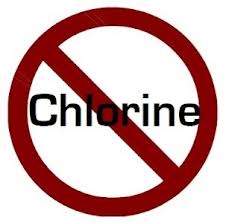English 

No.21-2 of Jiyang Industrial Park, Jiyang District, Jinan, Shandong, China

No.21-2 of Jiyang Industrial Park, Jiyang District, Jinan, Shandong, China
What cleaning product can I use on my stainless steel tanks?

4. 1. NO Bleach or other Chlorinated products
Chlorinated Bleach or other chlorine products will cause irreparable damage to your Stainless Steel. Sodium Percarbonate without chlorine (sometimes known as oxygen bleach or Oxyclean) is OK for cleaning but will not sanitize..

Cl2 (chlorine) is a very potent oxidizer (reason it kills bacteria) and therefore high levels of Chlorine may accelerate chloride corrosion of stainless steels. 304 and 304L, 321 SS may be used for “water applications” with up to 2 ppm chlorine, while 316 and 316L alloys may “take” up to 4 ppm..
Although no stainless steel grade is totally immune to chloride SCC, the relative resistance of stainless steels varies substantially. The combination of tensile stress and a specific corrosive environment can crack stainless steels. This mode of attack is termed stress corrosion cracking (SCC).

2. What cleaning products do you recommend?
Right now, we currently recommend using a non-caustic alkaline cleaner like Five Star's PBW (Powdered Brewery Wash) for cleaning Ss 304 Steel tanks as well as gaskets, orings, and tubing. Chemipro Wash is a good substitute if PBW is not available in your region. If you find that you cannot remove organic material or stains, you may want to try something like Exchilerator Wash cleanser, as it can be more effective when soaking. All three of these are both low foaming, which makes it way easier when you want to switch from an alkaline cleaner to an acid (like Saniclean.)
We recommend using PBW as we find it does a better job than Oxiclean. But if you are wanting to use OxiClean Free (which comes without perfumes or dyes) as a routine cleaner from batch to batch, as long as the water is soft and has a low amount of calcium, you should be fine. If you start to see any white stains of Calcium Carbonate build-up on the stainless steel, go ahead and repassivate or use a phosphoric-based sanitizer like SaniClean to remove them. This is much more common in hard water situations or heavy calcium loads in the water, but the average user will want to repassivate more often to avoid this potential build-up if using OxiClean
We do not recommend using dish soap to clean your brewing gear. Most dish soap often contains fats/lipids (typically either animal fat or vegetable fats) to better clean dishes. While this is effective on dishes, it can affect your beer much like a dirty glass can, hurting head retention and diminishing hop aroma. These fats and lipids can also affect your passivation preventing and even chromium oxide layer formation. Dish soap is not formulated as efficiently as a cleaning compound designed specifically for brewing and as most contain fragrances and dyes, we just can't recommend it. If you do end up using dish soap on your gear, make sure to clean with an alkaline solution (like PBW) and take additional care/attention to really clean that off, especially before passivation.
While you could use an all-in-one cleaner and sanitizer, we do not recommend them. By individually cleaning then sanitizing separately, you can verify that both steps are done completely and properly.


If you have any customization needs, feel free to contact us.
Contact Details:
- Email: info@carrybrew.com
- Number: +86 15662675200
- Website: www.carrybrew.com